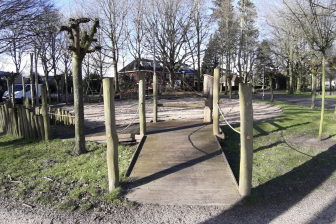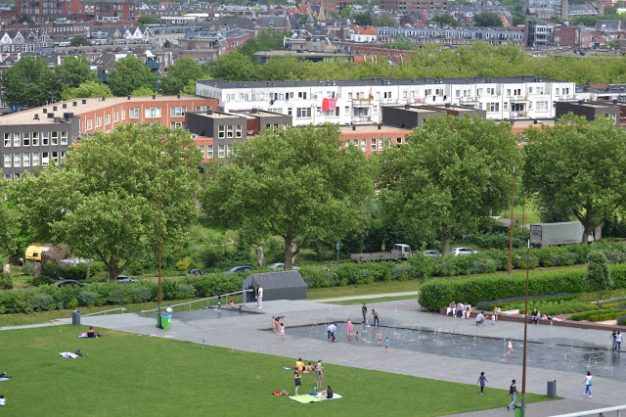
Playable cities: a model and a toolkit
We need a new approach to public spaces if we really want to stimulate outdoor play for kids. This approach doesn’t start with picking some elements from catalogues of play equipment companies. We should start at the other end by taking into account the bigger picture: the purpose (WHY) and the conditions (HOW) to realise playable cities. Only then, do we know which actions (WHAT) have to be carried out.
By Gerben Helleman, blog Urban Springtime
In recent years, children’s outdoor play has declined. For health and pedagogical reasons, it is important that we stimulate outdoor play. But when we think about child-friendly public spaces, we usually make a false start. We tend to focus on adding playing attributes to existing playgrounds. But to choose the right actions we should start by looking at the main goals. Playing outside improves the health of kids, enriches their skills and most of all it gives them pleasure (WHY). These higher goals can only be achieved when the right conditions are created (HOW). For example, public spaces should be accessible, attractive, challenging, diverse and inviting. The different actions and efforts (WHAT) such as design, programming and ordering equipment are a result of these goals/conditions and not the other way around.
Integral approach
The moral of this story: if we want to realise playable cities we have to consider these three aspects WHY, HOW, WHAT – continuously and collectively. The model helps us to remember that we have to operate on multiple levels. All things considered, it looks like this (click here to enlarge):
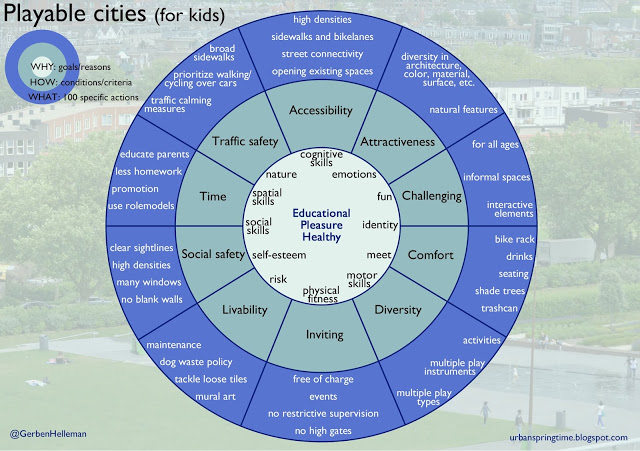
In the middle the underlying reasons (WHY), in the second circle the factors that determine whether a public space attracts or rejects kids from playing (HOW) and in the outer circle some examples of the specific actions (WHAT). Together they are the ingredients for making child-friendly cities.
Why
There are many reasons why we should stimulate outside playing for children. In short: 1) it enriches different skills, 2) it gives them pleasure and 3) it improves their health.
Public spaces are laboratories where children learn in multiple ways, such as cognitive, motor, and social skills. When children are exploring the public space it puts their brain to work. For example by observing and identifying different objects, shapes, forms and colours. Or by experiencing speed and balance on a bike, swing, slide or tree stump. By interacting and collaborating with other persons they develop social norms and values.
Besides being an important learning tool playing is also (or mostly) about pleasure. It’s an enjoyable activity in which children can explore the world on their own terms. Create their own identities. And when kids successfully deal with a challenge it helps build their self-esteem.
Playing outside also has a positive influence on their health: regular physical activity builds strong bones, lung capacity and endurance. It provides a healthy weight and it reduces the risk for developing chronic disease risk factors.
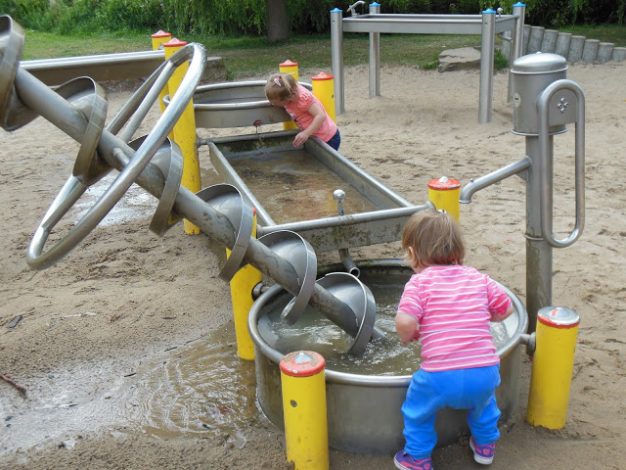
How
If we want to achieve these goals we have to take into account a few interrelated conditions at different scale levels.
At the urban level cities should arrange enough public spaces that are easy to reach by – preferably – pedestrians and cyclist (accessibility). When the playable spaces and important facilities (school, shops, parks) are too far – in time or distance – kids are not allowed by their parents to go alone. Their activity range is also influenced by the presence of enough safe roads (traffic safety) and eyes on the street (social safety).
The destination itself has to be attractive for both kids and their parents. The playspace has to be clean and the equipment must be well maintained (livability). The presence of amenity factors are also important, such as seats, tables, and a restroom (comfort). And at the same time, it is also important to think about the visual richness of a place (attractiveness). Think of landscaping such as trees, flowers and water features that provide shade and attracts bird life. Next to these ‘basic needs’ a place becomes much more popular when there are a lot of things to do (diversity). The more play opportunities, the more fun. Especially when these activities are appropriate for different ages (toddler, school age, teens), strength, types of character, skill levels and courage. A place with exciting elements that encourage adventure, exploration, and imagination (challenging). This long-term attraction of a place not only depends on physical factors but also on the presence of other people and if someone feels welcome (inviting). This means open and free access, but also the condition that it should be a safe emotional space where kids can be themselves and are free to choose their own activities.
At the individual level children should be allowed to play outside (time). The minutes of active opportunities have decreased because often kids (and their parents) have other obligations at school or in their free time. And there are more things nowadays competing for a piece of leisure time, such as more indoor space, toys, game consuls, and TV on demand. That’s why they also should be motivated by their parents, teachers and by designers of public spaces to go outside.
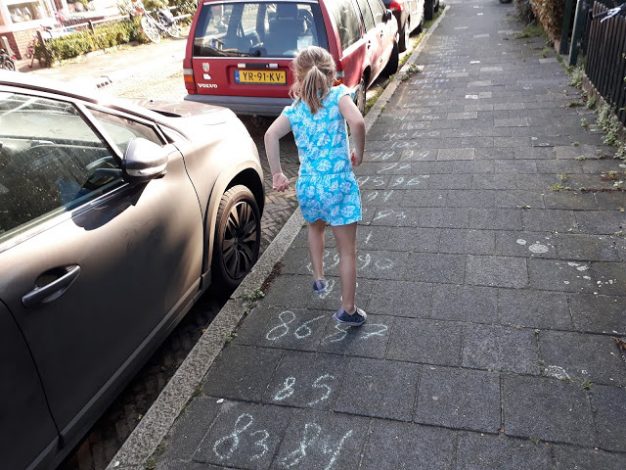
What
Now that we know the reasons (WHY) and conditions (HOW) for playable cities we can zoom in on the specific actions that we can undertake to create vibrant places. In total, I come to 100 measures accompanied by many examples (you can read them on the blog Urban Springtime).
In summary, you can say that it is about large-scale interventions, such as building compact urban environments with a mix of land use and giving back space to pedestrians and cyclists. But most of the time it is about small, low-cost interventions that can lead to a huge improvement. Think of opening up existing spaces (shared use), clear crossing markings, providing enough cycle racks, a car-free weekend, good signage, adding play markings on paved spaces, planting fragrant flowers, realising convenient seating for parents, an extra trashcan, arranging natural materials/portable equipment, tackling loose tiles, recess extension, organising an event and recruiting role models.
But above all, it is about a certain mindset. It’s about the aforementioned integrated, multi-sector approach. We have to keep in mind that kids can – when we allow and facilitate them – play everywhere. And we have to remember that the journey is as much important as the destination, figuratively and literally. So, if we want child-friendly cities we also need to priorities slow traffic by making enough wide pavements and separated, protected lanes for cycling.
And finally, it is also about a more user-centred approach: acting from the challenges, the needs, and possibilities of children. The human scale as a starting point for architecture, the design of streets, and arranging public spaces. Physical elements that match the size and proportions of humans and kids in particular. Facades of buildings that continually change in colour, shape, material, function, and detail. Active ground floors, transparent (non-reflective) windows, street furniture, and front yards for a soft transition between buildings and the street. And different public spaces with a variety of surfaces (paved, grass, sand, water), spatial elements (open-closed, bright-dark, large-small), and play equipment. All together they are the ingredients for safe, entertaining and enriching learning spaces for kids.
This article is a summary of five posts on the blog Urban Springtime in which the model and toolkit for playable cities is described in further detail.
(c) Photos and images by Gerben Helleman




